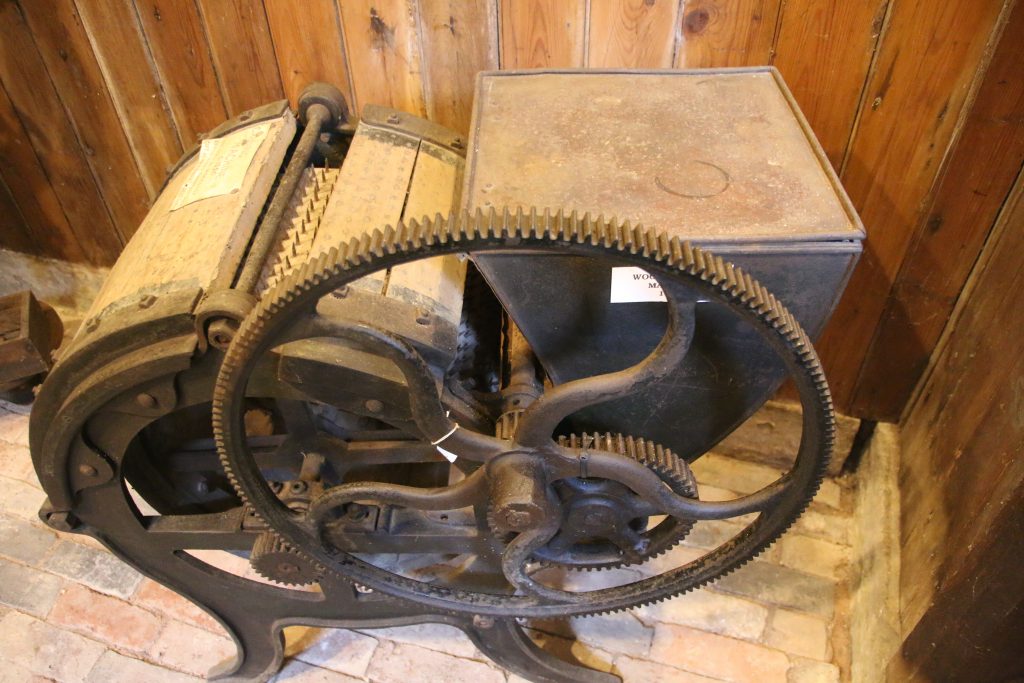
Carding is a process that untangles and cleans fibres to produce a continuous web ready for spinning & weaving. The word is derived from the Latin carduus meaning thistle or teasel, as dried vegetable teasels were first used to comb the raw wool. In the early eighteenth century, wool in England was carded using pairs of hand tools. In 1748 Daniel Bourn obtained a patent for a cotton carding machine, and probably used it in his cotton spinning mill in Leominster, but this burnt down in 1754, and was never rebuilt. His invention was later developed and improved by the famous Richard Arkwright and Samuel Crompton elsewhere, but the pioneering role of Bourn and Leominster should not be forgotten. From the 1780s, carding machines were set up in mills elsewhere. Priority was given to cotton, but woollen fibres were being carded in Yorkshire by 1780. This machine is not a factory sized one, but more of a cottage carder, perhaps used by a sheep farmer to process small amounts of wool for home spinning and weaving.
